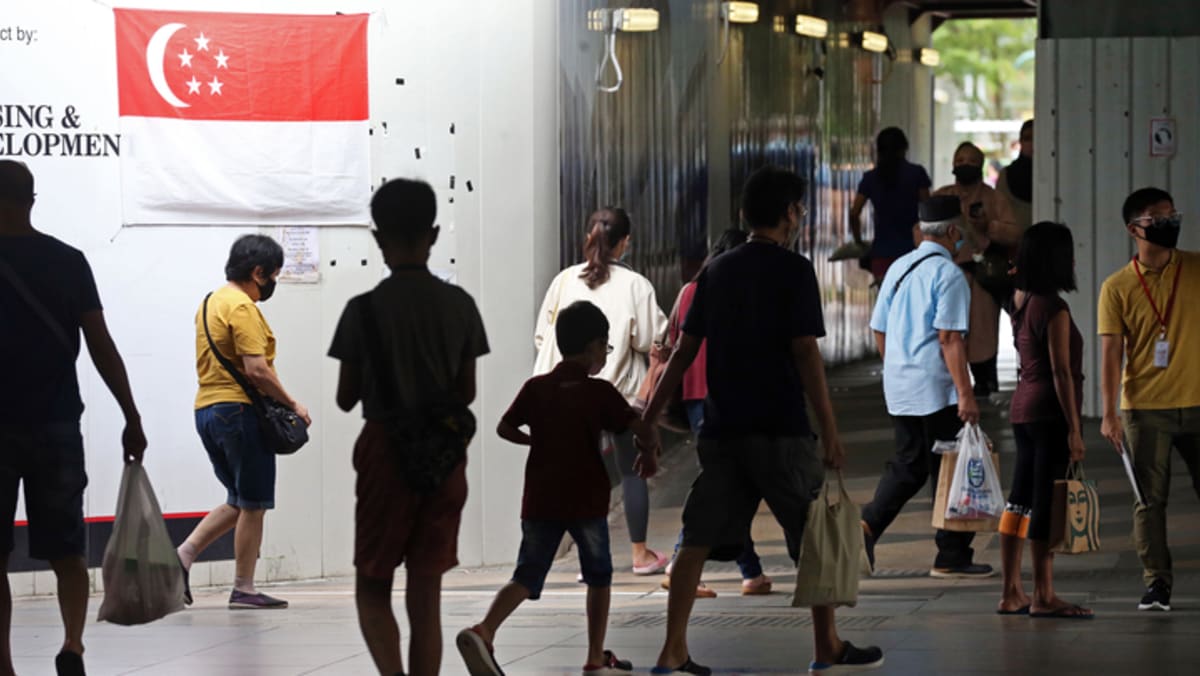SINGAPORE — The total population in Singapore is finally back above the level in 2019 before the pandemic led to a temporary exodus of people including permanent residents (PRs).
IMMIGRATION AND CITIZENSHIP
In 2022, 23,082 individuals were granted citizenship and 34,493 individuals were granted permanent residencyThis was an increase from 21,537 citizenship applications and 33,435 PR applications granted in 2021The number of applications for citizenships and permanent residency was slightly higher than the 22,714 citizenship applications and 32,915 PR applications granted in 2019, before the Covid-19 pandemicApplicants unable to complete in-person processes for the grant of citizenship or permanent residency in 2020 and 2021 have since managed to complete the relevant processes in 2022, contributing to the increase in numbers
AGEING POPULATION
The proportion of citizens aged 65 and above has grown from 11.7 per cent in 2013 to 19.1 per cent in 2023 The median age of citizen population has steadily increased to 43 years from 42.8 years between June 2022 and June 2023 Since 2013, the number of citizens aged 80 and above has jumped by about 70 per cent from 80,000 in 2013 to 136,000 in 2023
RECORD HIGH NUMBER OF MARRIAGES
Citizen marriages hit a record high of 24,767 marriages in 2022This was the second consecutive year of increase in citizen marriages, up by 5.7 per cent from 23,433 marriages in 2021 However, the annual average number of citizen marriages in the last five years is still lower at 22,700 compared to that of the average 23,600 marriages for the preceding five yearsPeople continued to get married later, as the median age at first marriage for citizen grooms and brides was 30.5 years for men and 28.8 years for women in 2022, up from 30.1 and 27.7 years respectively in 2012
TOTAL FERTILITY RATE AT ALL-TIME LOW
There were 30,429 citizen births in 2022, fewer than the 31,713 citizen births in 2021The annual average number of citizen births from 2018 to 2022 was 31,800, remaining lower than the preceding five years’ average of 32,700The resident total fertility rate hit a historic low of 1.04, after steadily declining over the past few decades. The replacement rate needed to maintain the existing population level is regarded as 2.1Lower births last year have been attributed to the Year of the Tiger in the lunar calendar, which is generally associated with fewer births among the Chinese population as some see Tiger babies as rebelliousThe median age of citizen mothers giving birth to their first child was 31.3 years in 2022, marking an increase over the decade from 30.1 years in 2012
WHY IT MATTERS
Sociologists interviewed by TODAY said that short of “radical changes” in government policy, the trend of falling a total fertility rate and couples being older at first marriages in Singapore is likely to continue.
Referring to the country heading on a path to becoming a “super-aged society” in the next 10 years or less, sociologist Paulin Straughan from the Singapore Management University (SMU) said that Singapore is likely to see the emergence of more “dual-income, no children” households and smaller family sizes.
Therefore, there is an “urgent need” to transform the way the country manages the population due to its implications for eldercare, and it is crucial to “build and nurture self-help communities in our neighbourhoods”, she added.
Professor Straughan also said that it is important to support the emerging group of citizens who will stay single throughout their life course, because the country “cannot afford to lose too many to immigration”.
Associate Professor Alwyn Lim, a sociology lecturer also from SMU, suggested that the Government might consider providing “generous incentives” to improve the total fertility rate in Singapore.
These include measures such as national policies to improve work-life balance or encouraging more women to opt for egg-freezing to prolong a woman’s fertility artificially.
In terms of incentives, he cited the example of Hungary’s policy of providing income tax exemptions to women who have four or more children, but said that it is likelier for Singapore to increase immigration to tackle falling population numbers.
“As the core citizen population gets smaller, and Singaporeans just don’t want to have kids, then the Government really has no choice. It has to increase immigration to the extent that eventually, it will replace the core population.”
Assoc Prof Lim added that it would be “challenging” for Singapore to achieve the replacement-level fertility rate of 2.1 children for each woman, and that it is therefore “inevitable” for the country to turn towards immigration.
“I think the immigration strategy is no longer just a stop-gap strategy. It sounds like it really has to be part of the long-term population policy that we have.”


